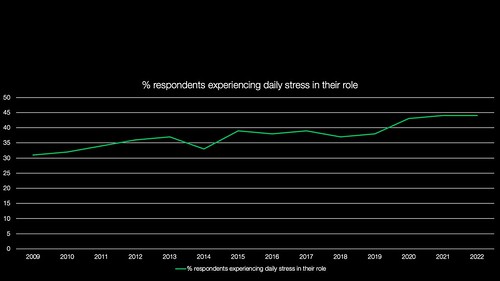4 minutes estimated reading time
I read about soft girls, when a friend shared an article from Glamour magazine with me.
Glamour
Glamour is a women’s magazine published by Conde Nast. When it launched in the UK, it was famous for its ‘handbag format’ size, which then spurred innovation in the summer editions of men’s magazines. Nowadays it’s important for its beauty-led content. But it covers other aspects of wellness through to personal finance.
What is a soft girl?
Soft girl seems to be an extension of quiet quitting. Soft girls was considered to be an aspirational lifestyle. Soft girls are about the now, they don’t want a high-achieving high-flyer. Instead it about being in tune with herself: energy levels, her moods and her menstrual cycle. They’d like to live slowly, read books, artistic pursuits and making dinner for their partner or family.
Many working women can’t to go ‘full soft girl’ and quit working due to having bills to pay. Ultimately, it’s a sub-set of an idealised lifestyle shared on TikTok and Instagram by some women.
Why soft girl mattered?
I received the article wrapped in a critique:
- Soft girl lifestyle implies immense social privilege to live a life of leisure.
- It would put feminist achievements back decades.
- Sharing such content set a bad example for girls and teenagers.
- It was a social conservative version of Elysian fields for women who knew their place.
- It wasn’t a proper piece of journalism.
Like the gender neutral quiet quitting, it’s a rejection of the rat race at a time when the deck is stacked against workers. In this respect it’s rather similar to the story of generation X slackers who were dealing with Reagonomics and a jobs market devastated by globalisation and automation.
Why soft girls don’t actually matter.
The whole story is based on a central conceit – that cohorts of people, generations if you will are somehow unique and special. The reality is that doesn’t hold true as much as you think. We change as we go through life stages, but there is more that binds us than differentiates us from one and other.
In fact, generation based thinking and segments do more harm than good.
Group cohesion scores.
Group cohesion scores ( a measure of how much a given community holds a common set of values measured across 419 statements). In the UK population as a whole, the average majority opinion is held by 48.7% of the population. BBH looked at how generations scored on this measure and found that they differed from the overall population about +1.3, ‘gen-z’ cleaved even closer to the population norm with a difference of -0.2. Generations have no stronger connections to each other than the rest of the population.
Longitudinal patterns.
Remember when I talked earlier about the story of generation X opting out, instead choosing to hold down a McJob and becoming a slacker due to cynicism fuelled by Reaganomics, the cold war and poor employment prospects? It turns out that a Stanford research project found that the cynicism-fuelled life view was down to cross-generational increase in cynicism, rather than gen-Xers. However, the label stuck and marketers missed out on a valuable insight.
The Economist recently highlighted Gallup’s State of the Global Workplace 2023 Report. A survey that it uses to promote its corporate employment engagement practice to help business managers become effective coaches to their teams and use ‘science-based management’.
Gallup describes the survey as ‘the voice of the world’s employees’. In their introduction Gallup discuss how low engagement is costing the global economy about 9% of global GDP, because 59% of employees are ‘quietly quitting’. A further 18% were ‘loud quitting’ or actively disengaged from work. On those numbers alone, quiet quitting is cross-generational in nature.
And actively engaged employees have been increasing over the past decade and a half. This increase in work engagement came against a background of progressively increasing daily stress levels at work.
The most reliable indicators of engagement were whether the person was able to work remotely (high engagement) or in a workplace (lower engagement) and management (high) versus individual contributor (low). Women were slightly more engaged than men and age showed no difference.
Soft girls might be just a dreamy balm to get them through the daily grind.
More information
How young women are rejecting a girl boss culture for a life of leisure. | Glamour magazine


